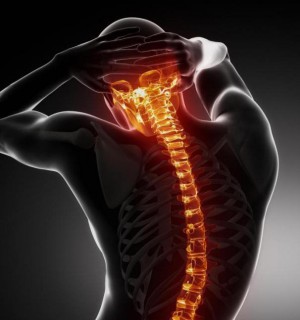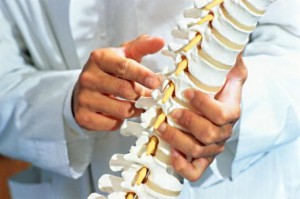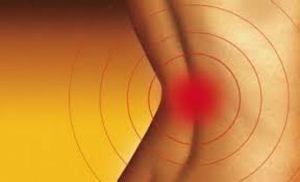The term “spondylopathy” refers to pathology of the spine, which manifest themselves in the form of degenerative transformations of the structures of the spine, accompanied by limited mobility and painful symptom.
This disease has a distinctive feature in the formation of bone spikes – ossification (overgrowth of bone) on the lateral plane of the vertebral bodies of the vertebrae, dislocation of adjacent vertebrae relative between themselves and other degenerative-dystrophic transformations.
The spinal column is a functional unit consisting of the supplying and neuro-muscular system, responsive to any pathological process in the body. It is characterized regulatory function over the activities of the visceral organs and peripheral nerve fibers.
Anatomic information about the spine
In case of occurrence in the spinal column degenerative transformation occurs dysfunction of the peripheral neuromuscul and organ systems. Due to frustration of a fabric of integrity of spinal column and disks are formed as a transformation in himself and in the trunk vasculature, localized in close proximity to the segment.

Causal factors
Modern neuroscience divides the whole complex of causal factors to the following:
- Traumatic;
- Genetic;
- Exchange;
- Professional;
- Age;
Due to the impact on the body of certain causal factors develop degenerative-dystrophic transformations of the disk and located adjacent the vertebrae, there is a disorder of the trophic bone and connective tissue.
The result of these phenomena is the formation of the looseness of the fibrous ring, reducing the vertical rate of the disk (“flattening”), the expansion of vertebral angles and the violation of the integrity of the joint and ligamentous system.
Spondylopathy there are different Genesis, depending on exposure to the causative factor. This article provides a brief description of neuropathic spondylopathy, that is, one that arose as a result of pathological processes in the Central nervous system.
Clinical manifestations
Clinical symptoms presented by the violation of different types of sensitivity and other neurological manifestations, which are characteristic of the underlying postprocess.
The most common causative diseases of neurogenic spondylopathy acts as tabes dorsalis, syringomyelia.
These diseases are characterized by:
- deformation processes in the structures of the spine and intense violations of sensornet whole body (paresthesia, numbness);
- loss of reflexes;
- disorder of motor skills, visual and auditory functions and orientation in space;
- metabolic dysmetabolic processes (baldness and loss of teeth, brittle nail, dryness of dermal cover, etc.).
Stage for
The pathological process is stepwise:
- The initial stage is accompanied by a slight transformirovannykh in the bone structure of the vertebrae (loosening, thinning, or seal).
- Forces of deformation processes due to the growth of bony outgrowths and the development of degenerative phenomena in chondro ligaments of the articular joints.
- The appearance of the visualized changes in morphological parameters of the vertebrae (calcination, the deployment, the concavity), the refinement and so the naming of disk protrusion with the formation of muskulaturnoy weakness.
- Intensive decompensirovanna manifested pathological fractures, narrowing (stenotic phenomena) spinal canal, significant compression of necroeconomy and vascular network.

Diagnosis
The diagnostic procedure applied instrumental and laboratory methods:
- rentgenissledovany, CT and MRI reference methods for the detection of changes in anatomical structure of the vertebral segments and spinal tissue;
- bacteriological and serological examination (blood for antigens to infectious agents, etc.).
Therapeutic approach
Therapeutic measures are carried out strictly with the basic disease, i.e. aimed at eliminating the causal pathology. Symptomatic therapy provides for the appointment gormonoterapii drugs (Hydrocortisone, Prednisolone) and nonsteroidal anti-inflammatory drugs (Diclofenac, Meloxicam, Ketanov etc.), they aimed at the removal of inflammation and pain relief. Activation of regenerative processes in tissues chondrules shows chondroprotectors (Chondroitin, etc.).
For normalization of trophic processes in the tissues prescribe a course of vitamin therapy, relief of spastic States in the muscle group involves the use of muscle relaxants (Mydocalm, etc.).




There are additional points that fit this. May I?